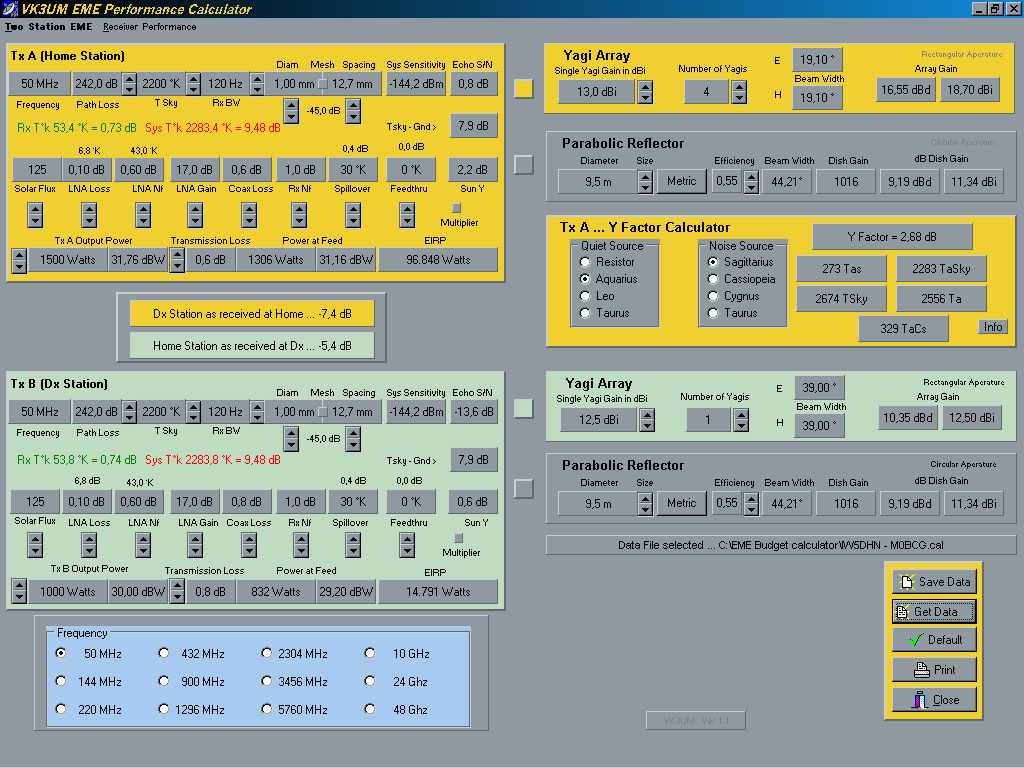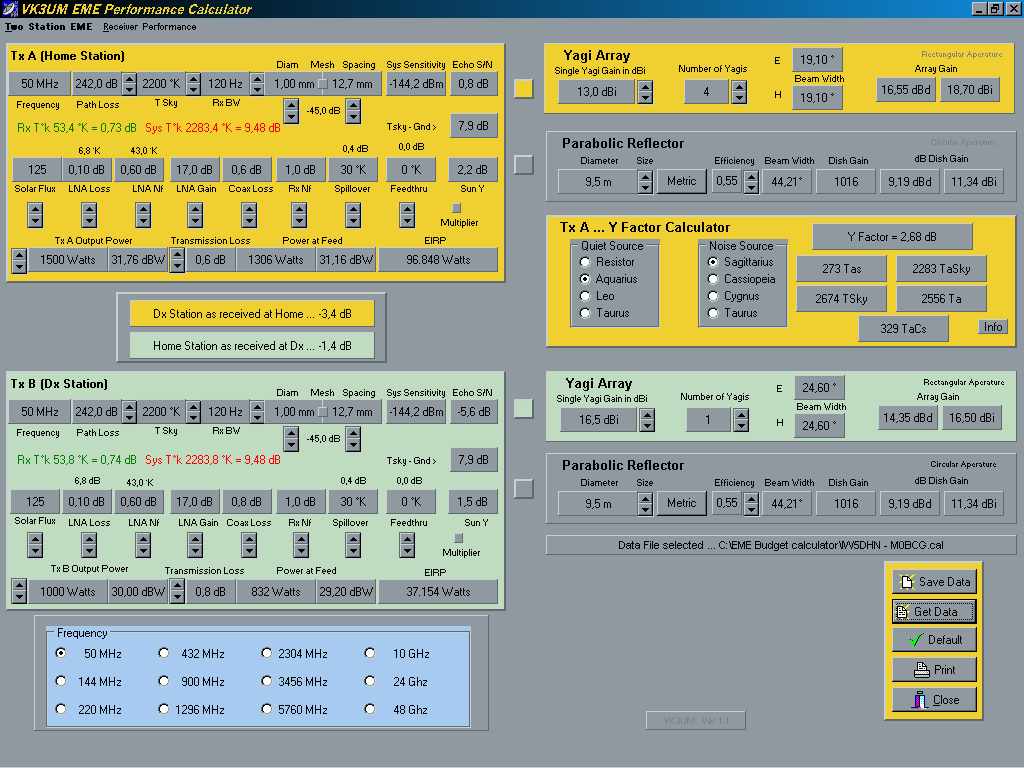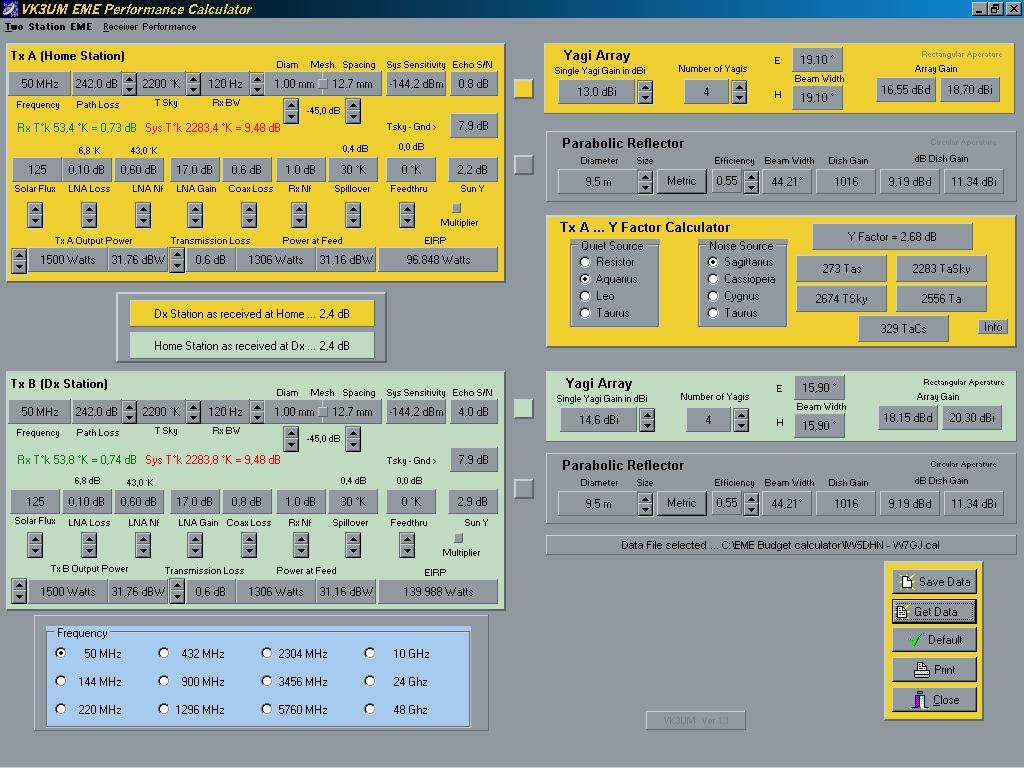What you need to make EME activity on six meter?
·
Antenna system with at least 13 dbd of gain for CW
qso, 11 dbd for JT44/JT65 qso
·
EIRP 40 Kw for CW qso, 15 Kw for JT44/JT65 qso
·
Very low loss between antenna and receiver (it would
be useful a good preamplifier, even if placed just ahead the transceiver)
·
DSP filter, but only for CW qso, not necessary for
JT44/JT65 qso
·
A good software for traking the Moon. I usually use Nova for Windows or Moonsked, but also Traker is
very good and it's absolutly free (thanks Lance W7GJ !)
· Patience, a lot of patience!!!!
The smallest station I completed so far is Neil 7P8NK/VA7DX during a DXpedition in Lesotho last July/August 2004. Neil was running a single 5 elements yagi by M2 (just 9 dbd of gain!) and almost 1 kW. He was coming at my QTH -26 db by JT65A!!!
That's the proof that you can complete EME QSO even running a "small" station by WSJT if at the other side there is a stacked yagis station.
Here you can see a calculation sample taken using VK3UM software. The simulation shows how a single six elements antenna station, without ground gain and running good power, could be copied by IW5DHN with elevated array as well (no ground gain) and vice versa. One of smallest station I completed so far, W5UWB, runs a similar station set up.

Here you can see the same station using the same six elements antenna, this time pointed at the horizon with average 4 db of ground gain, while IW5DHN is still elevated. You can clearly notice the EIRP increment for the Dx Station and the definitly better signal/noise level.

And here, finally, a simulation of W7GJ signal as theretically received by IW5DHN and vice versa. Lance runs a 4x9 elements array and his signals are really the loudest I ever heard via EME.
It is really interesting to note that both stations are assumed with elevated arrays (no ground gain), but the signal/noise is still an impressive +2,4db!
